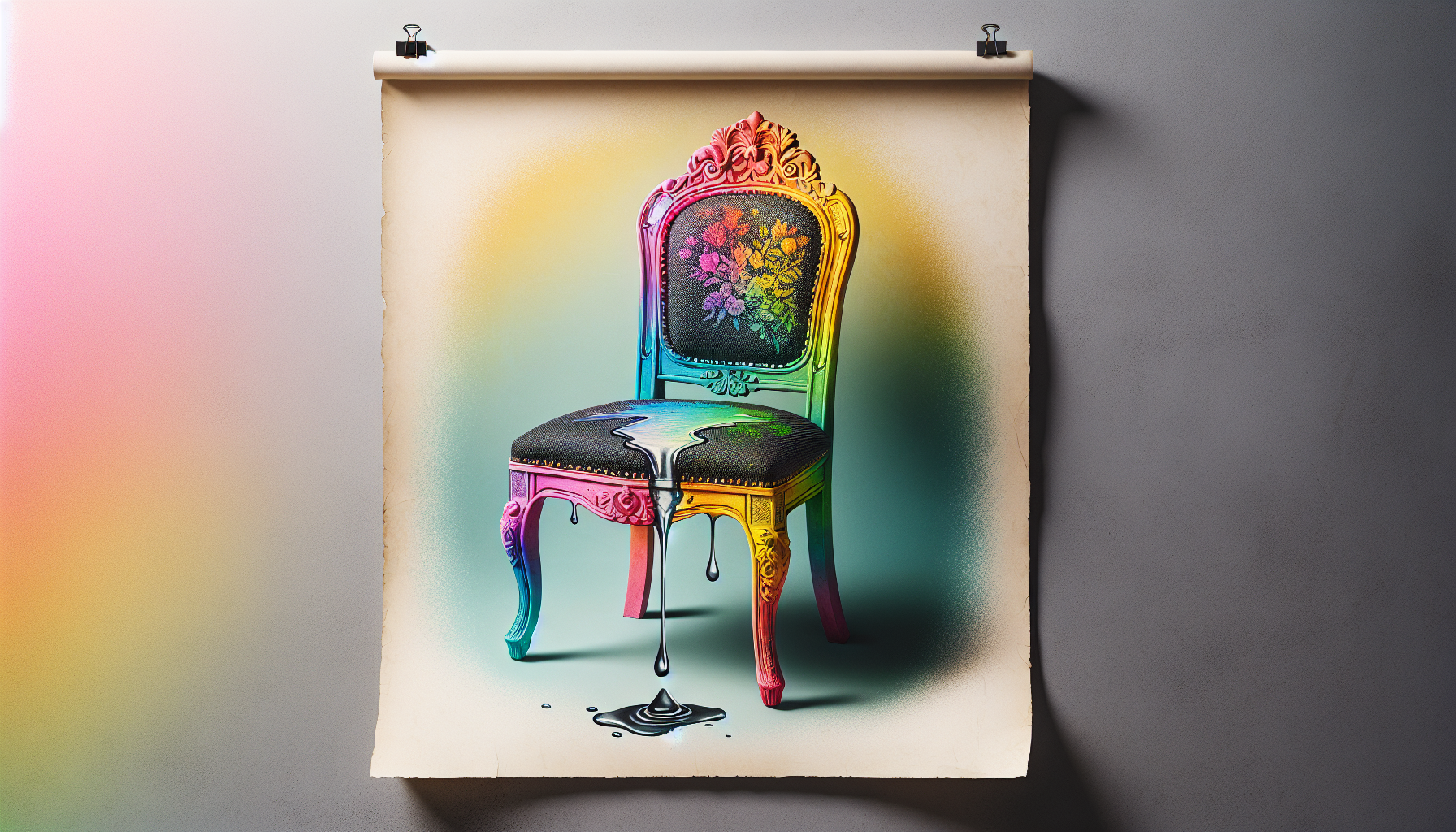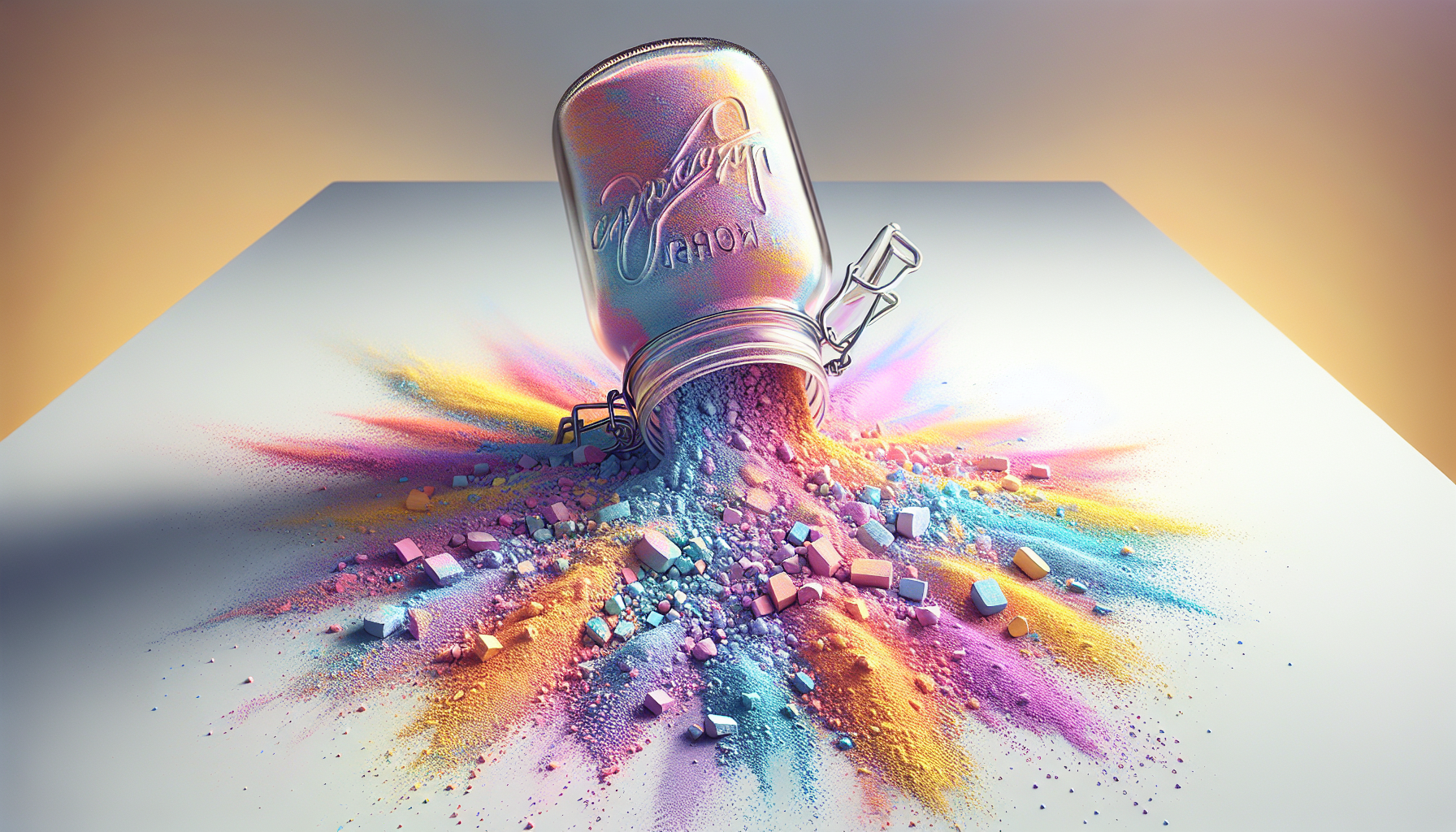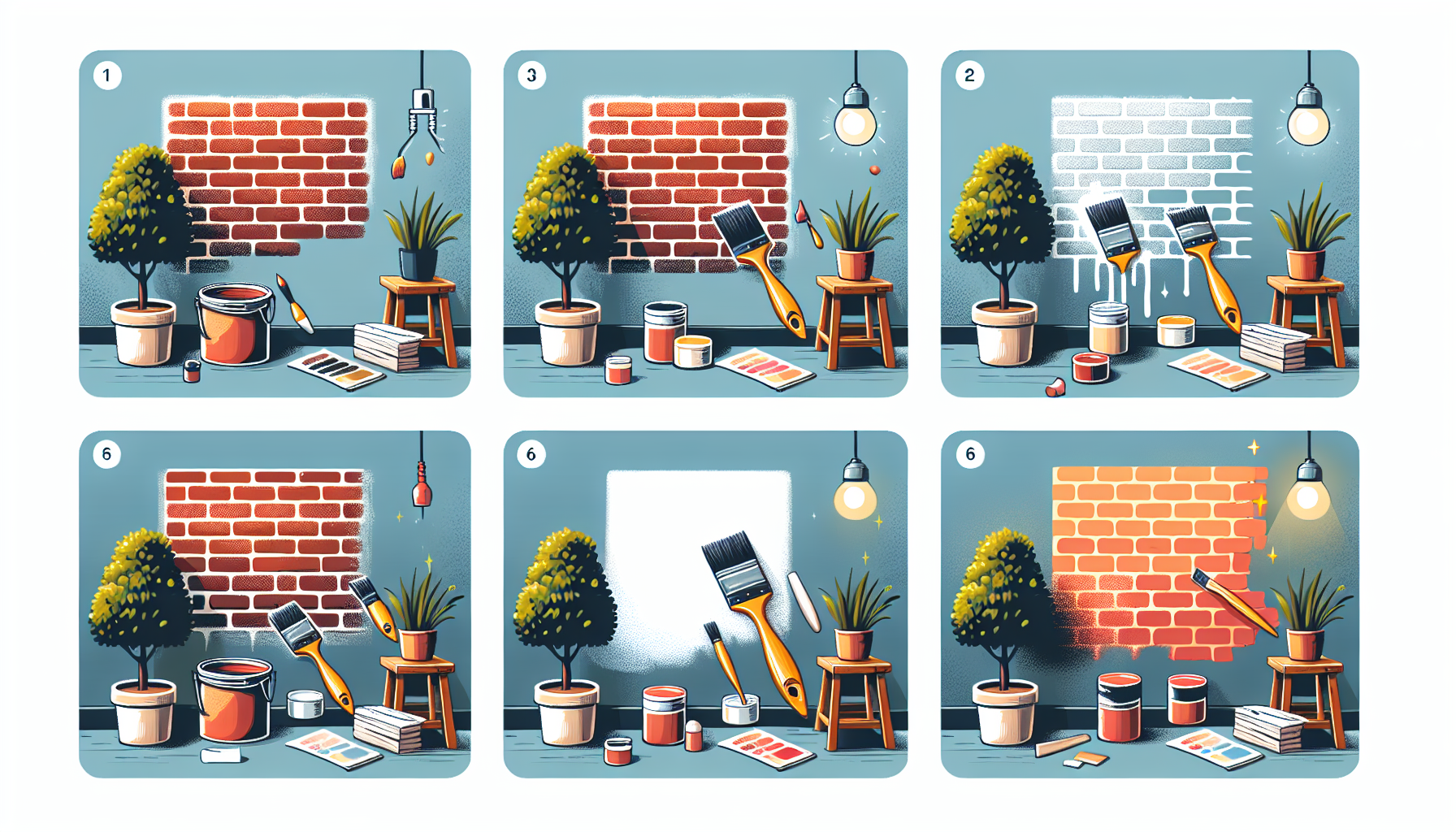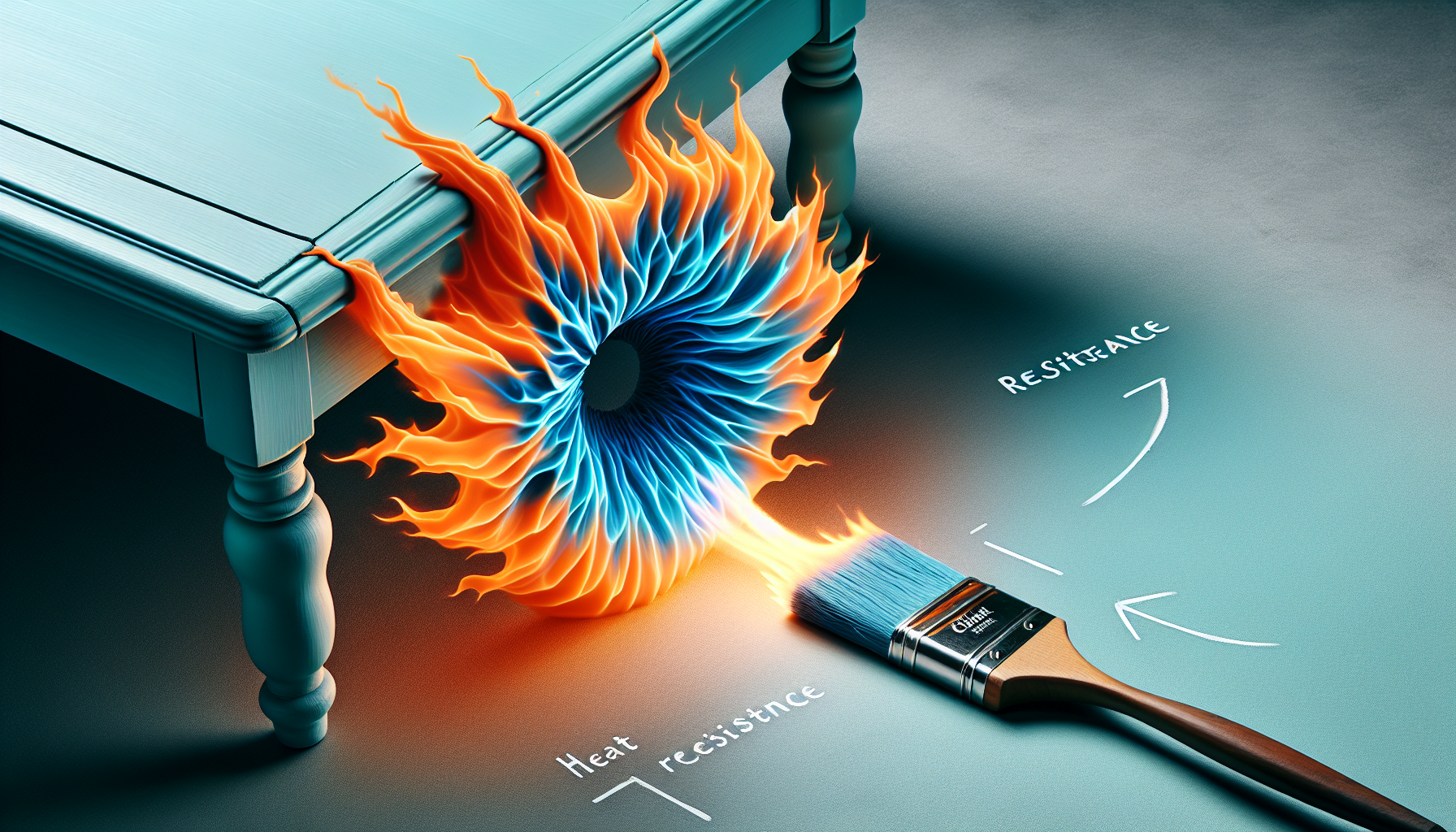Chalk paint, a popular choice among DIY enthusiasts and professional painters alike, has taken the world of home decor by storm. But amidst the buzz, a common question arises: is chalk paint waterproof? This article aims to provide a clear and concise answer to this much-debated subject. By examining the properties of chalk paint and its resistance to water, we can better understand its potential limitations and how to safeguard our painted surfaces. So, let’s dispel any uncertainty and delve into the world of chalk paint’s water repellency.
What is chalk paint?
Overview of chalk paint
Chalk paint is a type of paint that is known for its unique matte finish and opaque coverage. It is a popular choice among DIY enthusiasts and professionals alike due to its ease of use and versatility. Chalk paint gets its name from its chalky texture and appearance when dry, resembling the softness and opaque finish of chalk. It can be used on a variety of surfaces, from wood and metal to walls and furniture, making it a versatile option for many different projects.
Composition of chalk paint
Chalk paint typically consists of a few key ingredients that contribute to its distinctive properties. These ingredients often include water, calcium carbonate (chalk), pigment, and a binder such as acrylic or latex. The high concentration of calcium carbonate gives chalk paint its characteristic matte finish and opacity. The binder helps the paint adhere to surfaces and ensures durability. Some variations of chalk paint may also contain additional additives for enhanced adhesion or specific effects.
Uses of chalk paint
Chalk paint offers a range of uses and benefits, making it a popular choice for both interior and exterior projects. Its versatility allows it to be applied to various surfaces, including furniture, walls, cabinets, and decorative items. Chalk paint is highly sought after for its ability to create a distressed or vintage look, as it can easily be sanded or waxed for added character. It is also a great option for people who enjoy upcycling furniture or revamping their living spaces without the need for extensive preparation or priming.
Properties of chalk paint
Matte finish
One of the most prominent features of chalk paint is its matte finish. This low sheen appearance provides a smooth, velvety texture and gives an elegant and rustic touch to any painted surface. The lack of glossiness in chalk paint can create a warm and cozy atmosphere, making it ideal for vintage or shabby chic styles.
Opacity
Chalk paint is known for its excellent coverage and opacity. It can effectively cover up most surfaces in just one or two coats, depending on the color and condition of the substrate. This feature makes chalk paint especially useful for transforming dark or vibrant colored surfaces into lighter or more muted tones.
Adhesion
Chalk paint is designed to adhere well to various surfaces, including wood, metal, glass, and even plastic. Its adhesive properties make it an appealing option for projects that involve painting furniture or surfaces that may require a higher level of adhesion. However, it is important to ensure that the surface is clean and free from dust or grease before applying the chalk paint to maximize adhesion.
Coverage
Chalk paint typically offers excellent coverage, allowing you to achieve a uniform and consistent finish. Its high pigmentation and thick consistency make it easy to cover most surfaces with minimal effort. In some cases, additional coats may be required to achieve the desired color intensity or to cover up darker colors completely.
Drying time
The drying time of chalk paint can vary depending on several factors, including the brand, humidity, and thickness of the applied layers. On average, chalk paint dries relatively quickly compared to other types of paint. Typically, it takes around 30 minutes to an hour for each coat to dry to the touch. However, it is important to note that the paint will continue to harden and cure over the next few days, so it is advisable to avoid heavy use or cleaning until the paint has fully cured.
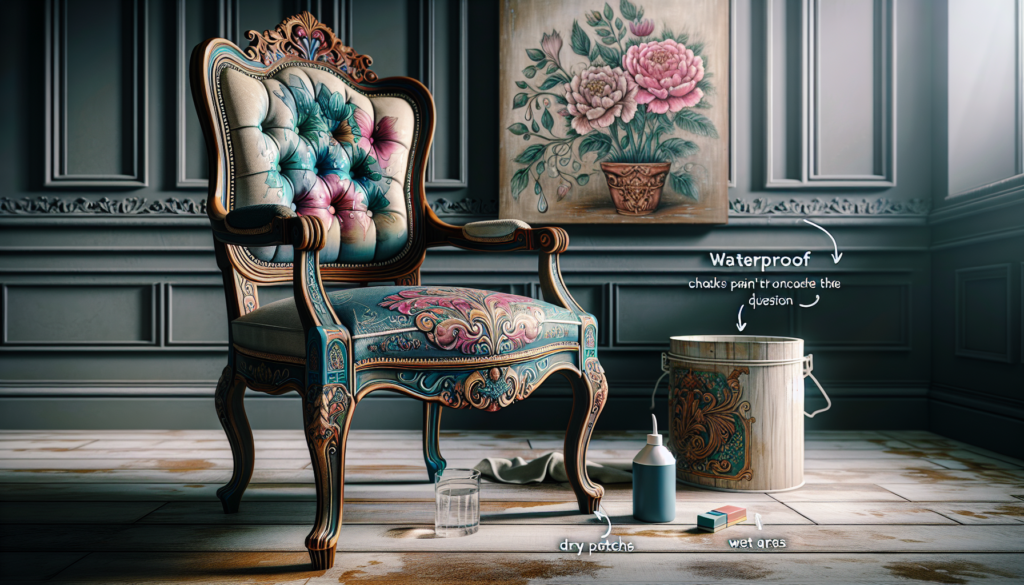
Water resistance of chalk paint
Explanation of water resistance
Chalk paint is not inherently water-resistant. While it offers many desirable properties, water resistance is not one of them. Due to its composition and lack of a protective finish, chalk paint is porous, allowing moisture to penetrate the surface. As a result, prolonged exposure to water or high humidity can cause the paint to deteriorate, potentially leading to peeling, flaking, or discoloration.
Factors affecting water resistance
Several factors can impact the water resistance of chalk paint. The porosity of the painted surface, the thickness of the applied layers, and the presence or absence of a protective finish all play a role in determining how well the paint can withstand exposure to water. Additionally, the quality of the chalk paint itself can influence its water resistance, as some brands may incorporate additives or ingredients that enhance this property.
Testing water resistance
To determine the water resistance of chalk paint, various tests can be conducted. These tests typically involve exposing the painted surface to water or moisture for a specified period and assessing any changes or damages. It is important to note that water resistance should not be confused with waterproofing. While a paint may be water-resistant to a certain extent, it does not guarantee complete protection against water damage.
Results of water resistance tests
The results of water resistance tests on chalk paint can vary depending on the specific brand and formulation. Some chalk paints may exhibit better water resistance than others due to their composition or additional protective measures. However, it is important to remember that no chalk paint can provide the same level of water resistance as dedicated waterproof paint or coatings.
Sealing chalk paint for waterproofing
Importance of sealing chalk paint
To enhance the water resistance and overall durability of chalk paint, sealing is highly recommended. Sealing chalk paint helps protect the surface from water damage, stains, and daily wear and tear. By applying a protective layer over the chalk paint, you can prolong the lifespan of the paint and ensure its longevity.
Types of sealers
There are several types of sealers that can be used to waterproof chalk paint. One common option is wax, which can be applied as a topcoat to provide a protective barrier. Wax sealers can enhance the chalky appearance of the paint and create a smooth and polished surface. Another option is a clear water-based polyurethane, which forms a transparent and waterproof layer over the paint. Polyurethane sealers are often more durable and long-lasting than wax.
Application of sealers
When applying sealers to chalk paint, it is important to follow the manufacturer’s instructions for optimal results. In most cases, the sealer can be applied using a brush or a lint-free cloth. It is recommended to apply the sealer in thin and even coats, allowing each layer to dry completely before applying the next. This ensures proper adhesion and a smooth finish. Additionally, some sealers may require light sanding between coats to promote better adhesion and a flawless final result.
Effectiveness of sealing chalk paint
Sealing chalk paint with a suitable sealer can significantly improve its water resistance. The protective layer created by the sealer acts as a barrier, preventing moisture from penetrating the paint and causing damage. However, it is important to note that even with sealing, chalk paint may not provide the same level of waterproofing as dedicated waterproof paint. Regular maintenance and periodic resealing may be necessary to maintain the water resistance of the painted surface.
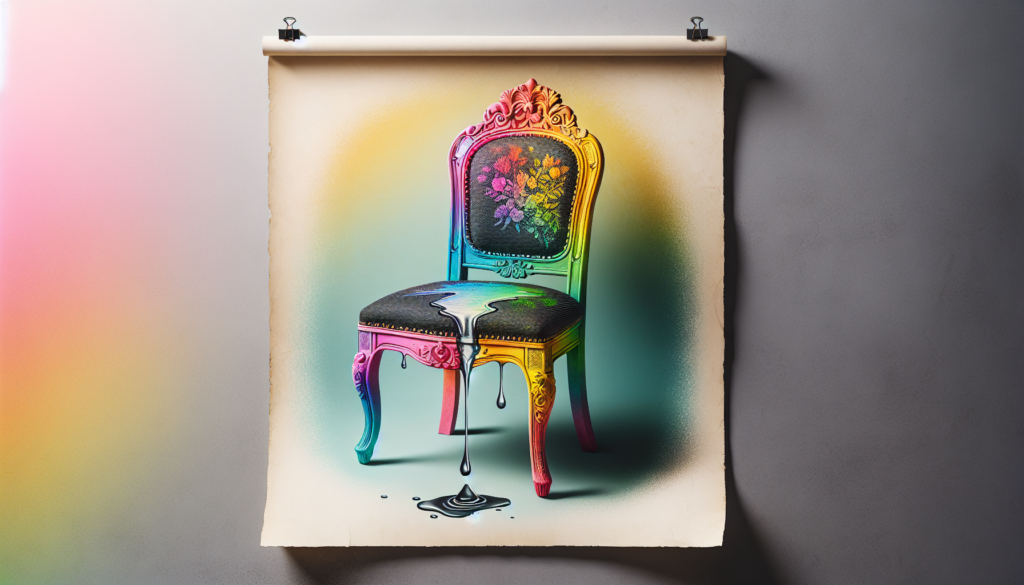
Chalk paint vs. waterproof paint
Differences between chalk paint and waterproof paint
Chalk paint and waterproof paint differ in their composition and performance. Chalk paint, as previously mentioned, is not naturally waterproof and requires additional measures such as sealing to enhance its water resistance. On the other hand, waterproof paint is specifically formulated to withstand exposure to water and moisture without the need for additional sealers. It forms a protective and impermeable barrier that prevents water from seeping through.
Advantages and disadvantages of chalk paint
Chalk paint offers several advantages that make it a popular choice for many projects. Its matte finish and opaque coverage provide a unique and aesthetic appeal. Chalk paint is also relatively easy to use, requiring minimal surface preparation and priming. However, its lack of inherent water resistance can be seen as a disadvantage, especially for surfaces exposed to moisture or high humidity. Additionally, the need for sealing and periodic maintenance may add to the overall cost and effort.
Advantages and disadvantages of waterproof paint
Waterproof paint, as the name suggests, has the primary advantage of providing superior protection against water damage. It forms a durable and impermeable layer that can withstand prolonged exposure to water and moisture. This makes waterproof paint well-suited for areas such as bathrooms, kitchens, or exteriors. However, waterproof paint typically has a glossy or satin finish, which may not be desirable for those seeking a matte or chalky appearance. It may also require more extensive surface preparation and careful application.
Chalk paint for outdoor use
Suitability of chalk paint for outdoor surfaces
Chalk paint can be used for outdoor surfaces, although its water resistance limitations should be taken into consideration. It is generally more suitable for covered or protected outdoor areas rather than direct exposure to rain or extreme weather conditions. Outdoor surfaces painted with chalk paint should be regularly maintained, inspected, and resealed as needed to ensure their longevity.
Preparation of outdoor surfaces
Before applying chalk paint to outdoor surfaces, proper preparation is essential. This includes cleaning the surface to remove dirt, debris, and any previous coatings that may interfere with adhesion. The surface should be dry and free from moisture to ensure optimal paint application. Additionally, for optimal results and improved water resistance, it is recommended to apply a primer specifically formulated for outdoor use.
Application and maintenance of chalk paint outdoors
When applying chalk paint to outdoor surfaces, the same techniques and principles as indoor applications apply. Multiple thin coats are usually recommended for even coverage and durability. It is important to allow each coat to dry completely before applying the next to prevent unsightly brush marks or uneven finish. Regular maintenance and periodic resealing are essential to protect the painted surface from the elements and to ensure its water resistance.
Alternative options for waterproofing outdoor surfaces
For outdoor surfaces that require higher levels of water resistance or waterproofing, alternative options such as dedicated waterproof paints or coatings may be more suitable. These products are specifically designed to withstand the harsh conditions of outdoor environments and provide long-lasting protection against water damage. It is important to select a product that is suitable for the specific surface and intended use to ensure optimal performance.
Removing chalk paint from waterproof surfaces
Techniques for removing chalk paint
Removing chalk paint from waterproof surfaces can be a bit more challenging than from porous surfaces. However, there are several techniques that can be used. One method is to gently scrape off the paint using a plastic scraper or putty knife. Another option is to apply a chemical paint stripper specifically designed for removing paint from waterproof surfaces. It is important to follow the manufacturer’s instructions and take necessary precautions when using chemical strippers.
Effects on waterproof surfaces
When removing chalk paint from waterproof surfaces, it is crucial to be mindful of any potential effects on the underlying material. Some paint removal methods or products may cause damage or discoloration to certain surfaces, especially if they are sensitive to chemicals or scraping. Before attempting to remove chalk paint, it is recommended to test the chosen method or product on a small, inconspicuous area to assess its compatibility and any adverse reactions.
Precautions when removing chalk paint
When removing chalk paint from waterproof surfaces, it is important to take necessary precautions to ensure personal safety and the protection of the surrounding environment. Work in a well-ventilated area to minimize exposure to fumes or chemical vapors. Wear gloves, eye protection, and a mask to protect the skin, eyes, and respiratory system. Additionally, it is advisable to cover or protect adjacent surfaces or objects to prevent accidental damage or contamination.
Tips for prolonging water resistance
Proper surface preparation
Proper surface preparation is essential to maximize the water resistance of chalk paint. Ensure that the surface is clean and free from dust, grease, or previous coatings. If necessary, lightly sand the surface to promote better adhesion. Additionally, applying a suitable primer before the chalk paint can further enhance its water resistance.
Thorough application techniques
When applying chalk paint, it is important to ensure thorough and even coverage. This can be achieved by using multiple thin coats rather than a single thick coat. Avoid applying the paint too thickly or unevenly, as this can affect the overall finish and water resistance. Use a high-quality brush or roller designed for the specific type of paint to achieve the best results.
Regular maintenance
To prolong the water resistance of chalk paint, regular maintenance is essential. Inspect the painted surface periodically for any signs of damage, such as peeling or flaking. Promptly address any issues by touching up the paint or resealing the surface if necessary. Regular cleaning can also help prevent the buildup of dirt or other substances that may compromise the paint’s water resistance.
Avoiding harsh conditions
To protect the water resistance of chalk paint, it is advisable to avoid exposing the painted surface to harsh conditions whenever possible. This includes prolonged exposure to direct sunlight, extreme temperatures, or excessive moisture. If the painted surface is located in an area prone to these conditions, additional measures such as shelter or protective coverings may be necessary to maintain the paint’s integrity.
Common misconceptions about chalk paint
Misconception 1: Chalk paint is naturally water-resistant
Contrary to popular belief, chalk paint is not naturally water-resistant. While it offers many desirable qualities, such as a matte finish and excellent coverage, it still requires additional measures such as sealing to enhance its water resistance. Chalk paint is porous by nature, making it susceptible to water damage if not properly protected.
Misconception 2: All chalk paints are the same
Not all chalk paints are created equal. There is a wide variety of brands and formulations available, each with its own unique characteristics and qualities. Some chalk paints may have better water resistance properties or be more suitable for specific applications. It is important to research and choose a high-quality chalk paint that meets your specific requirements.
Misconception 3: Sealing is not necessary for chalk paint
Sealing chalk paint is highly recommended to enhance its water resistance and overall durability. While some may believe that chalk paint does not require sealing, this misconception can lead to premature paint failure and a compromised finish. Applying an appropriate sealer is crucial to protect the painted surface from water damage, stains, and daily wear and tear.
Conclusion
Chalk paint offers a unique and versatile option for a wide range of projects, providing a distinctive matte finish and excellent coverage. While it is not naturally water-resistant, there are ways to enhance its water resistance, such as sealing with wax or a clear water-based polyurethane. However, for surfaces that require higher levels of water resistance or waterproofing, dedicated waterproof paint or coatings may be more suitable. Proper surface preparation, thorough application techniques, regular maintenance, and avoiding harsh conditions can all help prolong the water resistance of chalk paint. It is important to address common misconceptions about chalk paint, such as assuming it is naturally water-resistant or that all chalk paints are the same. By understanding the properties and limitations of chalk paint, you can make informed decisions and achieve the desired results in your painting projects.
